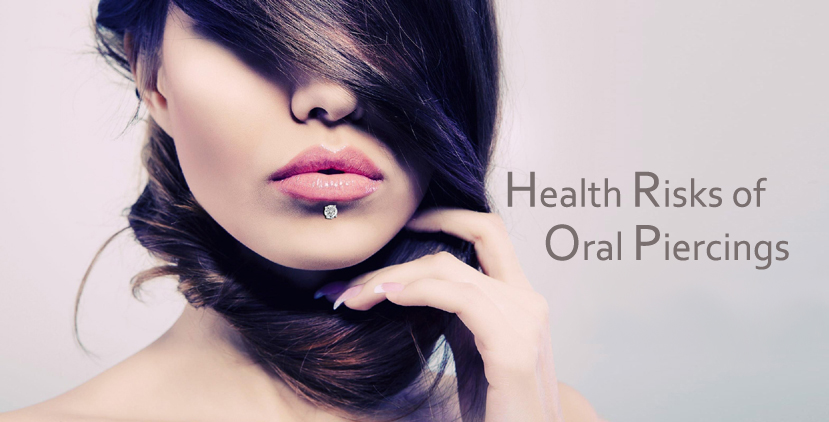Toothaches, Bumps and Bruises
If your child tells you their teeth hurt, we can help.
ALWAYS consult a dentist or an emergency medical service for
ANY type of dental trauma or pain.
Your child is growing and changing every day – crawling, walking and running. Along with these new milestones, bruises, bumps and accidents can occur. The following is a guide to help you deal with a dental emergency.
Toothache
- If swelling occurs, place a cold compress on the face next to the sore tooth.
- Do NOT use heat, as this can cause increased swelling and pain.
- Do NOT place aspirin, other pain relievers or numbing gels on the gum tissue around the sore tooth.
- Take your child to the dentist immediately.
Knocked-Out Tooth
- If it is a baby tooth, do not try to replace it (a child under five years will probably not have adult teeth). Call our office immediately.
- If it is a permanent (adult) tooth:
- The tooth should be immediately placed back into its socket, or if obviously contaminated, rinsed for 10 seconds in cold water and then repositioned into the socket. Constant gentle pressure must be applied to the tooth to keep it in place until treatment is performed. Contact our office immediately for treatment.
- If immediate placement back is not possible, the tooth should be stored in milk and the child, with the tooth, must be seen by a dentist or emergency service immediately.
Tooth is Pushed In
- Baby tooth – Do not touch. It may have caused damage to the developing permanent tooth and may need to be extracted.
- Permanent tooth – Do not touch the tooth until an x-ray can be taken. The tooth may return to its original position on its own or it may need treatment, such as an orthodontic appliance, for proper re-positioning.
Tooth is Fractured
- If the fractured piece can be found, we may be able to glue it back using special adhesives or restore the tooth with a filling.
Tooth is Out-of-Place
- Baby tooth – Do NOT touch. It may need to be extracted.
- Permanent tooth – If an immediate assessment by a dentist is not possible, push it in and align it with the other teeth. Give the child soft foods only and call our office immediately.
For after-hours emergencies only contact Dr. Buzaglo at 416-895-2894,
an emergency dental service or visit an Emergency Room at a local hospital.
Thumb-sucking & Pacifier-Sucking Habits
 Both thumb-sucking and pacifier-sucking habits carry a significant risk of developing problems if the habits persist.
Both thumb-sucking and pacifier-sucking habits carry a significant risk of developing problems if the habits persist.Thumb-sucking habit should be eliminated by age 4-5, while pacifiers should be avoided by age 1 – 1½. By this time, minor changes in the positioning of the teeth may self-correct as your child grows.
Long-term problems may include:
- Cross-bite – the upper and lower teeth bite in reverse positions. This may lead to joint problems;
- Upper front teeth may be “pulled” forward giving the appearance of “buck teeth”;
- Lower front teeth may be “pushed” or tipped backwards; and
- There may be a significant cost to correct these problems with braces.
How can parents eliminate the habit?
Thumb-sucking – Provide incentives or rewards. Designate specific times of the day for the habit, and slowly narrow the times of the day until the habit is stopped.
Pacifier-sucking – Cut off a small piece from the tip, then every few days cut off a bit more until your child cannot hold it in his/her mouth.
Medical History Update
Why should you update your Dentist with changes to your medical history? Why does the dentist need to know about your hospitalizations, medications, allergies, and other personal medical problems?
After all, having a dental cleaning or a filling is not a big deal, right?
The answer may not be as simple as you think. Most dental treatment is quite uneventful. However, sometimes your health condition and medications can influence the way your dental treatment needs to be provided, and require your dentist to make certain changes to help avoid potential problems. What might seem like a small thing could be really important.
Our team of health professionals want to provide
the best possible treatment for you, as safely as possible.Here are a few examples:
- If dental procedures might induce bleeding we need to know that your blood will clot normally. Blood clotting can be affected by many conditions, such as liver disease, medications, including aspirin, and even many herbal preparations can interfere with normal blood clotting.
- Your dentist relies on a healthy immune system to help fight infections. Some conditions like diabetes, and some medications like steroids, reduce the effectiveness of your immune system.
- Many patients need to take preventive antibiotics before certain dental procedures are performed. For example, some patients with a heart murmur, or an artificial hip or knee, may need to take an antibiotic prior to certain treatments to help prevent a serious infection from occurring.
All of the information on your medical history questionnaire is kept strictly private, and is protected by doctor-patient confidentiality. It will not be shared with anyone outside our office without your permission.
As you can see, your medical health and your dental health are closely linked. We are partners, working together to provide you with the best possible dental care. That is why it is so important to carefully and thoroughly answer all the questions on the medical history questionnaire and to inform us of any changes to your medical history. Each question is there for a reason. If you do not understand any question, or you are not sure about the answer to any question, just ask your dentist.
When it comes to your medical history, tell your dentist everything!
Bad Breath (Halitosis)
 Bad Breath, or halitosis, is a sign that there may be a problem with your oral health.
Bad Breath, or halitosis, is a sign that there may be a problem with your oral health.Treating it may be as simple as improving your daily oral hygiene or it may indicate the presence of extensive tooth decay, gum disease or another medical problem.
According to dental studies, approximately 85% of people have persistent bad breath caused by dental conditions. Causes include gum disease, cavities, poor oral hygiene, dry mouth, certain health conditions and foods.
How to prevent bad breath?
- visit the dentist regularly for periodontal maintenance and hygiene
- brush your teeth and tongue twice per day
- floss your teeth daily
- Rinse your mouth with non-alcoholic mouthwash
- avoid tobacco
- avoid alcohol and caffeine as they contribute to dry mouth
Bad breath is a warning sign. Have a dentist take a look at your mouth!
Oral Piercing and Health
 Piercing the tongue, lip or cheeks has become a popular form of self-expression. People interested in this trend should be aware that it is not without health risks.
Piercing the tongue, lip or cheeks has become a popular form of self-expression. People interested in this trend should be aware that it is not without health risks.Risks Associated with the Procedure
- Infection – When the skin is penetrated for surgical or cosmetic procedures there is always a risk of infection developing, and the potential for infection is higher especially for treatment involving the oral tissues because the mouth is full of bacteria.
- Bleeding – Any procedure that involves piercing the oral tissues may result in prolonged bleeding due the constant wet environment, which drastically slows the clotting process.
- Swelling – The risk of swelling and delayed healing is especially high for tongue piercing because the tongue is constantly in motion. Since the tongue can swell significantly, there is a risk of airway blockage.
- Nerve Damage – The tongue is filled with nerves that control movement (for speech and chewing) and taste. A piercing can damage these nerves permanently
- Blood-borne disease transmission – It is no surprise that the process of getting a piercing always carries the risk of being exposed to bacteria, such as those that cause tetanus infections, or viruses, such as those responsible for Hepatitis B, C and D.
- Endocarditis – The wound created during a piercing provides the opportunity for oral bacteria to enter the bloodstream, where they can easily travel to the heart. For people who have specific heart conditions, the bacteria can potentially cause inflammation and infection of the heart valves or tissues.
Complications Associated with the Jewelry
- Gum and Bone Loss – The risk of gum and bone loss around teeth is a significant concern for those with lip piercings. The fasteners used to hold a piercing in place continually rub and irritate the gums and bone, which always result in a localized thinning of these tissues. With extensive bone loss there is also the potential for tooth loss.
- Tooth Fracture – The risk of fracturing a tooth is always a concern for those with tongue piercings. Accidentally biting down onto the stud can result in chipping or severe fractures of tooth structure, and in some cases the tooth cannot be restored with a filling and would then require extraction and replacement.
- Interference with normal oral function – Oral jewellery can stimulate excessive saliva production, can interfere with the ability to pronounce words clearly, and may cause problems with chewing and swallowing food.
- Interference with oral health evaluation – Jewellery in the mouth can block the transmission of x-ray radiographs. Clear and unobstructed radiographs are essential to a complete oral health evaluation. Jewellery may prevent the x-ray from revealing conditions like cysts, abscesses or tumours.
- Aspiration and Ingestion – There is always the possibility that the fasteners can loosen and become undone. These components are a choking hazard if it obstructs the airway, and they can lead to injury if they are aspirated into the lungs or ingested into the digestive tract.
Erosion
Throughout the course of an individual’s life, teeth are exposed to many physical and chemical insults, which can contribute to their deterioration. As lifestyles have changed through the decades, the amount and frequency of consumption of acidic foods and drinks have increased. Since more people are keeping their teeth longer, erosive wear is becoming increasingly significant in the management of the long-term health of the dentition and the overall well-being of those who suffer its effects.
Dental erosion is the progressive, irreversible loss of tooth structure caused by chemicals such as dietary, gastric, or environmental acids that are placed in prolonged contact with the teeth.
Erosion alters the appearance and anatomy of the tooth and can lead to extreme sensitivity and can compromise the esthetic appeal of one’s smile.
Diagnosing this condition and initiating treatment can be quite challenging to the dental professional. While preventive and restorative treatments have been successful, with significant erosive loss of tooth structure extensive dental treatment may be necessary.
The primary causes of dental erosion include:
- Diet – acidic fruits, juices, carbonated beverages and sports drinks, herbal teas, vinegars and pickled foods, candies.
- Medications – chewable Vitamin C and Aspirin tablets, iron tonics, and saliva substitutes.
- Occupation – these are the result of the presence of certain atmospheric gases that become mixed with the saliva, producing acidic solutions.
- Sports – swimming in improperly chlorinated commercial pools.
- Overt vomiting or regurgitation of gastric fluids into the mouth.
- Consequences of anatomic defects, such as hiatus hernia, gastroesophageal reflux disease and esophageal diverticulosis.
- Psychological problems such as alcoholism, bulimia and anorexia nervosa.
- Medical conditions such as peptic ulcer and morning sickness during pregnancy.
Preventive & Restorative Treatment Options
Early recognition, elimination of the causative habit and behaviour modification are the most effective treatments of dental erosion. However, once it has occurred, erosion is irreversible and can only be treated with preventive measures for early erosions and restorations for more advanced lesions.
Preventive measures include eliminating acids and improving the resistance of the teeth to acidic attacks. Using sugar-free chewing gum to increase saliva flow and drinking ample amounts of water for a greater cleansing effect also are beneficial. Fluoride mouth-rinses, gels and varnishes, as well as dental bonding can be applied to reduce hypersensitivity, stop tooth structure softening by dietary acids and encourage the rebuilding of enamel. Restorative treatments, such as fillings and crowns, or referral to specialists may be indicated for extensive tooth loss.
Effective Tips for Preventing Dental Erosion
- Drink highly acidic drinks with a straw to keep acids away from your teeth.
- Do not swish highly acidic drinks in your mouth, such as colas and juices.
- Use a soft-bristled toothbrush with gentle strokes.
Cold Sores
Dry Mouth
Few oral health conditions are as underestimated as dry mouth (xerostomia). It is the symptom of a dry mouth, due to a subjective or actual decrease in volume or an alteration in its composition. Dry mouth may be temporary and caused by medications, dehydration or infections (such as mumps). It may also be permanent and is typically due to advanced age, diseases or radiation therapy.
There is a significant difference between having brief, reversible episodes and the ongoing condition of dry mouth. If left untreated, the latter can lead to serious oral conditions.
This is because saliva has an important role in keeping the mouth lubricated, protected and healthy. So when levels decrease the potential for developing oral conditions and diseases significantly rises.
THE FUNCTIONS OF SALIVA
1. Wetting and Lubricating
- Moistens food to make it easier to chew and swallow
- Enhances taste
- Enhances enjoyment of eating food
2. Protective
- Is an antimicrobial, lowering the risk of bacterial and fungal infections.
- Lubricates and protects the skin of the mouth.
- Irrigates the oral cavity preventing fungal and bacterial colonies from adhering to oral tissues and tooth structure .
- With a pH of 6.5, saliva has a buffering capacity, maintaining the mouth’s acidity levels at a healthy range.
3. Digestion
- Contains enzymes to initialize food digestion.
4. Dental Protection
- Neutralizes acid in food reducing the risk of tooth decay and erosion.
- Contains calcium and phosphates which help re-mineralize teeth, protecting against decay and periodontal disease.
Causes of Dry Mouth
The most common biological reasons for developing a dry mouth include talking, exercising, mouth-breathing, snoring, and increasing age. It often develops as a consequence of cancer treatment if the head and neck are exposed to radiation treatment. Smoking and dehydration also commonly cause dry mouth. As well, medical conditions including infection of the salivary glands or Sjögren’s syndrome often result in xerostomia.
Most cases of xerostomia however, are due to the side effects of medications. In fact, xerostomia is listed as a potential side effect of over 400 commonly prescribed medications and patients taking three or more medications are likely to suffer from xerostomia. 1
The most commonly used medications that have xerostomia as an adverse effect are:
- Medications that treat over-active bladders
- Anti-histamines, such as benadryl
- Anti-depressants
- Blood Pressure medications
- Sleeping pills
The Consequences of Dry Mouth
With the reduced cleansing in the dry mouth, food debris and, bacteria begin to adhere more effectively to teeth and oral soft tissues. As a direct consequence, patients become very susceptible to dental decay. Patients are also susceptible to fungal infections, such as candidiasis.
Other implications include disturbed taste sensation, burning sensations of the skin of the mouth, discomfort in speaking and swallowing, and for patients who wear dentures they have difficulty in managing them and decreased retention of these appliances.
Dry mouth can impact a patient’s quality of life. Since saliva is necessary for digestion, an inadequate amount can make swallowing and speaking difficult, making patients feel self-conscious, embarrassed and anxious. In severe cases, it can even lead to nutritional deficiencies.
Management of Dry Mouth
Since the term xerostomia can describe both symptoms as well as the condition of reduced salvia flow, therapies for dry mouth are designed to improve one or all of the following areas:
- Alleviating the sensation of dry mouth;
- Replacing or supplementing the missing saliva in the form of artificial saliva; and
- Supplementing some of the natural salivary enzymes.
Management of xerostomia in general practice may include treating the following:
A. Infection– Treat the patient’s dental and mucosal infections with antifungals, antibiotics and prescription mouth-rinses. Dentists and hygienists should provide oral hygiene instruction. Decay and periodontal disease must be treated immediately with a more frequent periodontal maintenance schedule and an active preventive dental care regimen.
B. Symptoms – Provide recommendations to reduce the symptoms of dry mouth. These include: moisten foods during meals, drink water more frequently, reduce alcohol consumption, quit smoking, and eliminate caffeine from the diet.
Simple, practical measures can also help. These include: drinking frequent sips of water, sucking ice-chips and chewing sugar free gum to stimulate saliva flow. However, patients should also be advised that sipping water might not be enough to manage xerostomia. This is because water wets surfaces rather than lubricating them, therefore symptom relief may be transient.C. Medications – If a medication is causing xerostomia as a side effect, dental practitioners can advise patients to consult their physicians about reducing the dosage or eliminating the xerostomic medication in order to relieve their symptoms. Alternatively, a prescription for a sialogogue, such as pilocarpine, may help stimulate the production of saliva if the salivary glands are functional and not damaged by disease.
D. Saliva substitutes and stimulants – These are designed to moisturize and lubricate the mouth, and increase salivary production. They are usually in the form of sugar-free gum, tablets, gels, mouthwashes, or toothpastes. They may contain sorbitol, xylitol, enzymes (e.g. lysozyme and glucose oxidase) and fluoride.
Other tips for easing dry mouth symptoms:
- Ensure adequate hydration by frequently sipping water
- Avoid things that dry the mouth such as hard or crunchy food like crackers
- Practice optimal oral homecare (plaque control)
- Use a cool air humidifier (clean daily)
- Chew sugar free gum to stimulate saliva flow
- A six-month recall examination is the standard for the healthy individual. For patients who are at a higher risk of developing oral conditions and diseases, a three-month preventative care and periodontal maintenance program is ideal
Oral Health Starts with the Entire Family
Research shows that kids are more likely to visit the dentist and have healthier mouths when their parents do too.
Set a good example by staying on a schedule of regular check-up appointments, eat properly and practice good oral health care at home.
Make appointments for the whole family today!
Did You Know??
Clinical research has found …
- Oral health problems are linked to general health conditions including obesity, diabetes, bacterial pneumonia, pre-term and low birth-weight babies, osteoporosis, bone/tooth loss, stroke and heart disease.
- People who keep their teeth live an average of 10 years longer than people who lose them.
- Clean teeth can help prevent heart attacks! Researchers have found that the most common strain of bacteria in dental plaque can cause blood clots when they escape into the bloodstream.
- Parents with healthy teeth have children with healthy teeth. And it’s not genetics! Good oral hygiene habits pass from parents to their kids. So do them a favour – teach them to brush and floss, and take them to the dentist regularly.
Preventive Dentistry can help you maintain your smile and your health.
Impact of Decay
Tooth decay can have a significant impact on a child’s growth and development. Later in life, decay impacts adults on multiple fronts including the integrity of tooth structure, function, comfort and confidence in your smile.
Tooth decay (“cavity”) has many causes, including poor oral hygiene, drinking and eating too many sweets.
Baby teeth are “made” differently than adult teeth. It may take a few years for decay to form in permanent teeth however it can develop in only six months in a baby tooth. Decay can develop so quickly in a child that they often do not feel any pain until it is either extremely deep or infection has developed.
Young children with untreated decay are more likely to weigh less than their ideal weight. They may show decreased intellectual, emotional and physical development. Since cavities may be painful these children may experience problems sleeping, become introverted and shy, or develop poor eating habits.
Early detection and treatment, in any age group, are critical in lowering the risk of requiring invasive and costly dental treatment.
Our Doctors
Dr. Mark M. Buzaglo
Dr. Mark Buzaglo is a graduate of the University of Western Ontario where he completed his Doctor of Dental Surgery Degree, receiving the Pierre Fauchard Academy Award for outstanding academic achievement. He completed his undergraduate degree at the University of Toronto where he earned a Bachelor of Science degree with Honours.
Commitment to the Community
Since he has been in practice, Dr. Buzaglo has dedicated an enormous amount of time to the community including teaching in daycares, development centres and schools, helping young parents and children maintain good oral health. His personal endeavour aims to improve the level of oral health care and awareness in our community.
Associations and Professional Memberships
- Royal College of Dental Surgeons of Ontario
- Canadian Dental Association
- Ontario Dental Association
- American Academy of Esthetic Orthodontics
- Academy of General Dentistry
- Canadian Academy for Esthetic Dentistry
- International Congress of Oral Implantologists
- Certified Invisalign Preferred Provider
Accomplishments and Awards
Dr. Buzaglo is an avid believer in ongoing continuing education and has completed many certified courses in all aspects of dentistry with particular focus in the fields of Cosmetic, Invisalign Orthodontics, and Implant Dentistry.
He is a contributing writer and editor for the oral health programs at AdvancingIn.com and mdBriefCase.com, Canada’s foremost on-line continuing medical education websites for Medical Doctors in Canada.
Dr. Buzaglo has received multiple awards throughout his career for his achievements professionally and commitment to the community.
Dr. Buzaglo has a creative passion that is evident throughout your experience in his office. He has personally designed the layout and features of the office to provide an esthetic appeal to the flow of the working space. His creative ability is truly reflected in the dental treatment he provides to his patients.
Dr. Neelufer Bana
Dr. Bana is a graduate of McMaster University where she received her Bachelor of Science Degree with Honours Distinction. She continued her studies and received her Doctor of Dental Surgery Degree from the University of Western Ontario.
In her spare time, Neelufer enjoys traveling, good food and spending time with her family and friends.
She is looking forward to meeting and taking care of all your dental needs, and exceeding your expectations.Associations and Professional Memberships
- Royal College of Dental Surgeons of Ontario
- Canadian Dental Association
- Ontario Dental Association
- Academy of General Dentistry
- Canadian Academy for Esthetic Dentistry
- Certified Invisalign Preferred Provider
Accomplishments and Awards
Dr. Bana is an avid believer in ongoing continuing education and has completed many certified courses in all aspects of dentistry with particular focus in the fields of Cosmetic, Invisalign Orthodontics, and Restorative Dentistry.
Dr. Bana has received multiple awards throughout her career for her academic and professional achievements.
Dr. Dahlia K. Pankowski
Dr. Dahlia Pankowski is a graduate of Queens University where she received her Bachelor of Science Degree. She then completed her Medical Degree at McMaster University and residency in Family Medicine at the University of Toronto.


